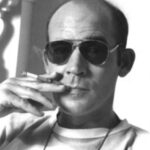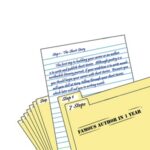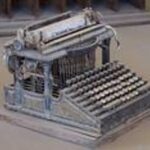Most writers prefer one or the other: fiction or non-fiction. The styles of fiction writers often differ greatly from those of non-fiction writers, and non-fiction writing is often considered “dry”, while fiction is thought to be “colorful” and “imaginative”. These two very different types of writing, however, converge in the genre of “Creative Non-Fiction”, which is something of a blend between the two.
Creative non-fiction is the use of fiction techniques in the creation of a non-fiction book. Rather than presenting the facts in an event-by-event reporting style, the author uses description and story-telling flavor to draw the reader in to the book. Reading a creative non-fiction book is much like reading fiction except that everything is true rather than conceived by the author.
If anything, I would say that creative non-fiction is the most difficult to write. You can’t just write down facts and figures that you take from your notes and other sources, and you likewise can’t just sit down at the computer and start making things up, as you can in fiction. Instead, you must be alert and observant during your research for your non-fiction book or article, detailing the things that you see so you can later describe them when you sit down to write.
In order to write creative non-fiction, you must be prepared from the very beginning. As you compile research, perform interviews, visit locations and conduct experiments, you must pay attention to the world around you. Make notes about what you see, hear, smell, taste and touch, and write down brief descriptions in your notes so that you can remember them later.
For example, let’s say that your non-fiction book takes you on an interview with a prominent CEO. When you go to his office for the meeting, pay attention to the décor in his office, the mannerisms of his assistant, the arrangement of his desk and the sound of his voice. Comment on the hum of fluorescent light bars, the Art Deco paintings, the dripping of the coffee machine, whatever you notice.
If you are constantly paying attention, you won’t have any trouble writing creative non-fiction when you go back to your desk. In addition to the questions and answers of your interview, you’ll be able to interject observations that you made during the course of your conversation.
One of the most popular genres of creative non-fiction is travel writing, which can be dull if it isn’t spiced up with the flavor of description. Let’s say, for example, that you’re writing a creative non-fiction article about your visit to Greece. While you’re there, learn how to identify Grecian architecture, the types of boats in the harbor, the names of Greek dishes and other descriptions. This will spice up your writing and captivate your audience.
It has been said by many publishers that creative non-fiction will attract a larger audience than regular non-fiction. It is far easier to wade through a book with verbose description and observations than it is to simply read a collection of facts. Many authors also prefer writing creative non-fiction because it gives them an opportunity to stretch their creative legs and to put their observations to good use.
If you are hoping to write creative non-fiction, try reading a few titles by masters of this art. Read The Right Stuff by Tom Wolfe (Black Dog & Leventhal Publishers, 2005) and In Cold Blood by Truman Capote (Vintage Press, 1994).





